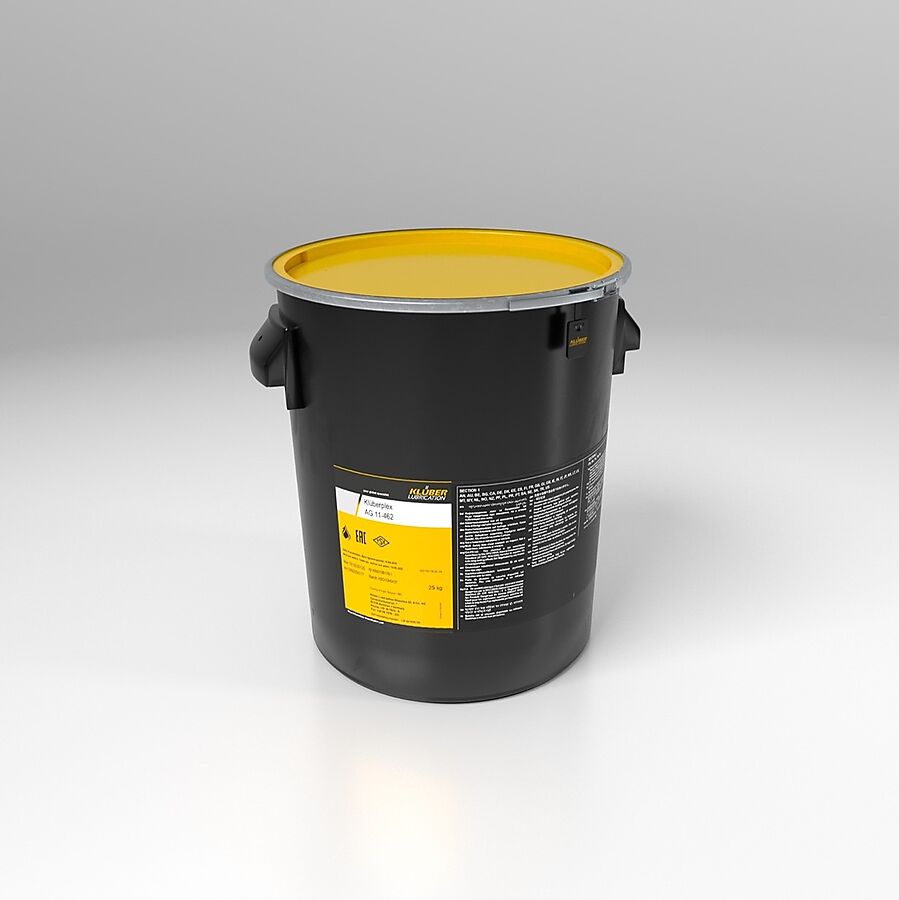
Last updated: 19/12/2023 05:14:57
KLÜBERPLEX AG 11-462 25 KG
Product Code
- Product group:
- 686
- Product number:
- 210024

KLÜBERPLEX AG 11-462 is a white operating and priming lubricant designed to protect and maintain your components. Formulated with white solid lubricants, it reduces contamination of your machine environment while adhering excellently even at low temperatures.

Product information
Much gear in the maritime and offshore industry is frequently exposed to seawater. Think of when your ships are in extended periods of standstill --- your gear and drives become vulnerable to corrosion and degeneration.
Backed by a strong formulation of select solid lubricants and additives, KLÜBERPLEX AG 11-462 protects your components from such damage, improving their performance, and extending their service life.
KLÜBERPLEX AG 11-462 also displays excellent adhesion strength even in low temperatures, preventing unwanted drip-offs. Due to the use of white solid lubricants, you can expect to enjoy low lubricant consumption and hence less contamination of your machine environment.
Features
Minimal contamination of machine environment due to use of white solid lubricants
Antiwear and anticorrosion
Good low-temperature adhesion
Benefits
Reduces maintenance needs of your machines
High-performing even in low temperatures
Protects your components from wear and corrosion damage, improving their performance and longevity
Specification
General
| Invent Hazard Material (IMO/EU) classification | C-30 |
|---|
Physical properties
| Colour | White |
|---|---|
| Density at 20°C [g/cm³] | ~ 1.05 |
| NLGI grade, DIN 51818 | 2 |
| Solid lubricants, percentage | approx. 20 % by weight |
| Texture | Homogeneous |
Dimensions/Weight
| Packing Size | 25 kg |
|---|
Technical data
| ISO viscosity grade of the base oil, DIN ISO 3448 | 460 |
|---|---|
| Shelf life [months] | 24 |
Performance data
| Drop point, DIN ISO 2176, IP 396 [°C] | ≥180 |
|---|---|
| Functional lubricant film [°C] | ~ -40 |
| FZG scuffing test, based on DIN ISO 14635, A/2,76/room temperature, scuffing load stage | ≥12 |
| Lower service temperature | -10°C / 14°F |
| Upper service temperature | 150°C / 302°F |
| Water resistance, DIN 51807 pt. 01, 3 h/90 °C, rating | 0 - 90 |
| Worked penetration, DIN ISO 2137, 25 °C, lower limit value [mm] | 265 x 0.1 |
| Worked penetration, DIN ISO 2137, 25 °C, upper limit value [mm] | 295 x 0.1 |
Safety Data Sheet (SDS)
Documents
Directions for use
KLÜBERPLEX AG 11-462 is suitable for use as a priming lubricant for gear rim and pinion drives. It can also work as a contrast lubricant for checking the drive's load pattern.
You may also use KLÜBERPLEX AG 11-462 for open gears, low-speed rolling bearings, sliding and guide rails, steel cables of winches or cranes and for marine applications and wind power stations frequently subject to saltwater.
As priming lubrication, apply KLÜBERPLEX AG 11-462 by brush or spatula. For the best result, clean the surfaces before lubrication.
As operational lubrication, apply KLÜBERPLEX AG 11-462 by manually operated grease guns or through appropriate central lubricating systems. You may also apply KLÜBERPLEX AG 11-462 via spraying at temperatures down to 0°C, but use an exhaustion device to avoid inhalation of the spray mist.
Provided sufficient relubrication is ensured, short-term thermal loads of up to 200°C are permissible. Extended exposure to intense sunlight may slightly change the lubricant's surface colour but does not affect its performance.